
From labels to composition: A nutritional analysis of plant-based meat and egg products in India
This nutritional analysis is the outcome of a two-part study comparing the nutritional labels of plant-based meat and egg products with their animal-derived counterparts and assessing the nutritional quality of their protein and fat constituents.
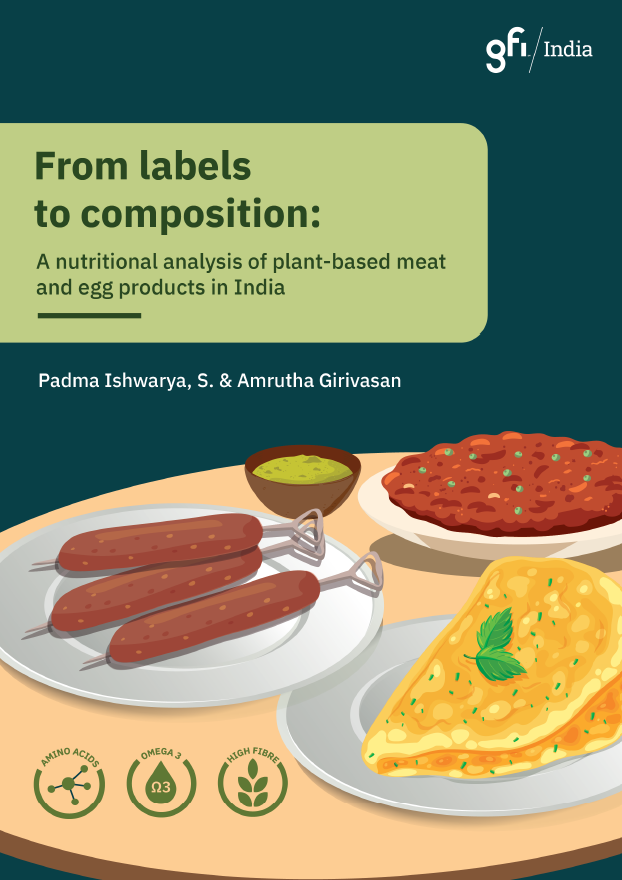
Overview
As the market for plant-based meat and eggs is growing in India, consumers are conscious of their nutritional value, along with taste and price. This study seeks to address the need for reliable information on the nutritional composition and quality of these products, which are often positioned as sustainable and healthy choices. By assessing the nutritional labels of plant-based meat and egg offerings in the Indian market and comparing their nutritional profiles to conventional animal-based counterparts, this e-book would serve as an authentic reference point for the consumers. Beyond the compilation of nutritional label information, this e-book presents the amino acid and fatty acid compositions of plant-based meat and egg products as a function of their sources of protein and fat, respectively. It will also identify any nutritional gaps that may exist, informing product development and innovation in the plant-based food sector.
Key comparative findings
Protein
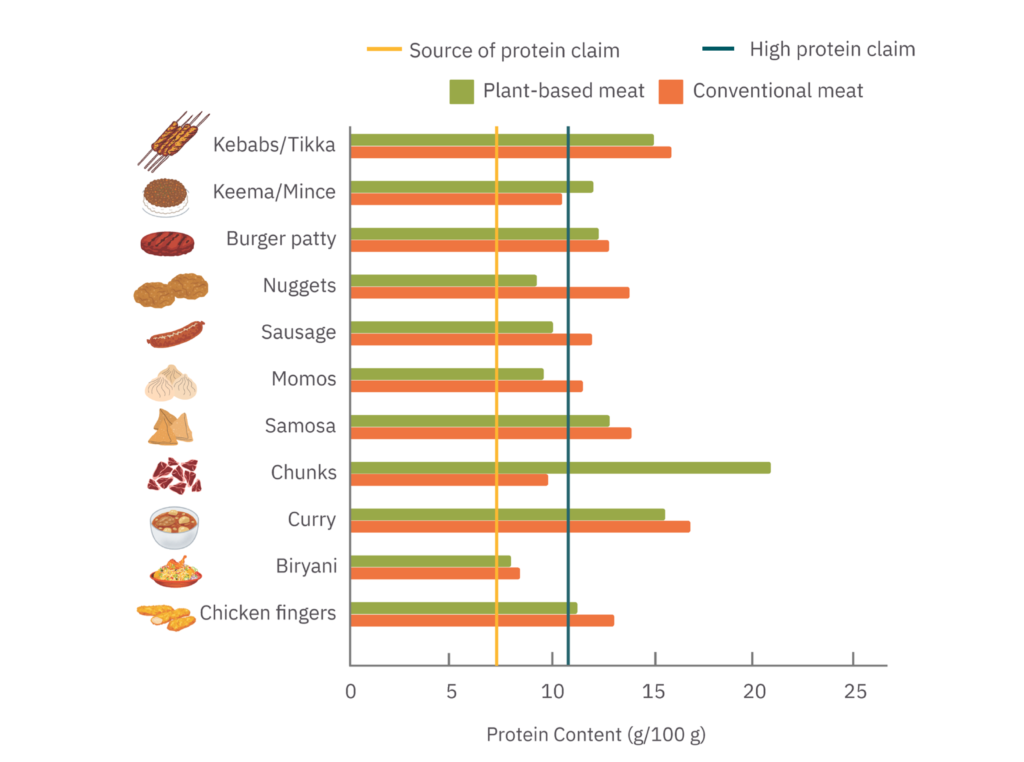
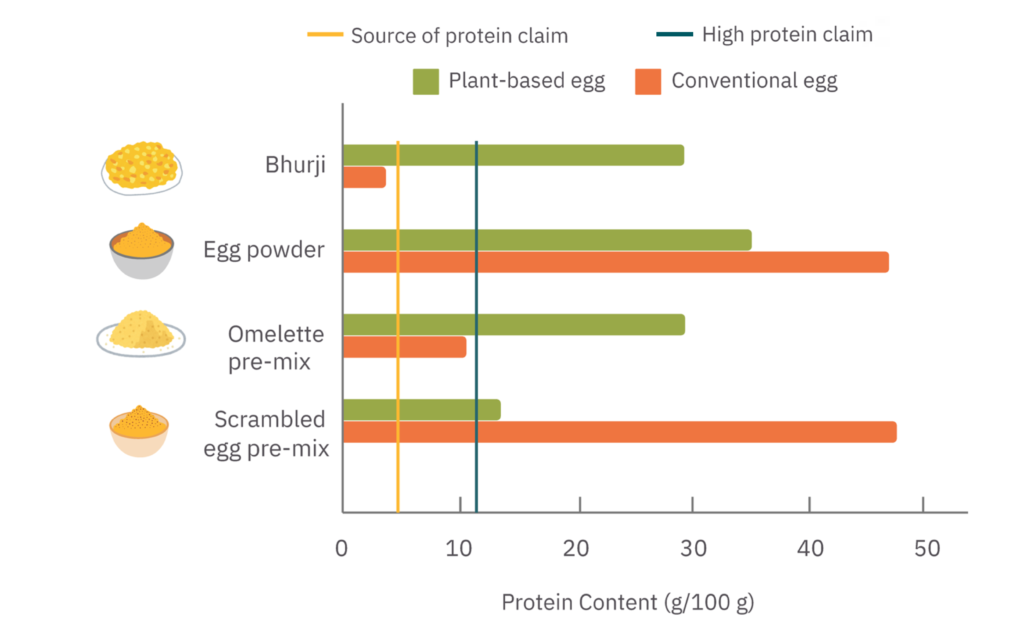
- The average protein content of different plant-based meat formats ranges between 9.1 and 20.8%, with chunks containing the maximum mean protein content.
- The protein content per 100 g of plant-based kebabs, keema, burger patties, samosas, chunks, curry, and chicken fingers complies with FSSAI’s criteria for the ‘high-protein’ claim.
- The plant-based egg bhurji and omelette pre-mix products exhibit a higher average protein content compared to their conventional egg counterparts.
- Among plant-based formats, egg powder has the highest average protein content (35%).
Amino acid composition
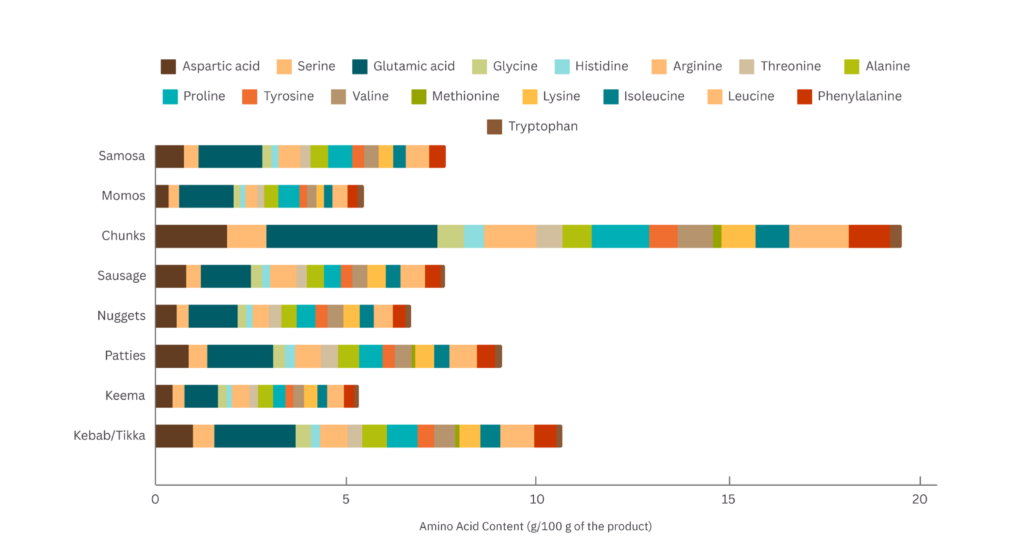
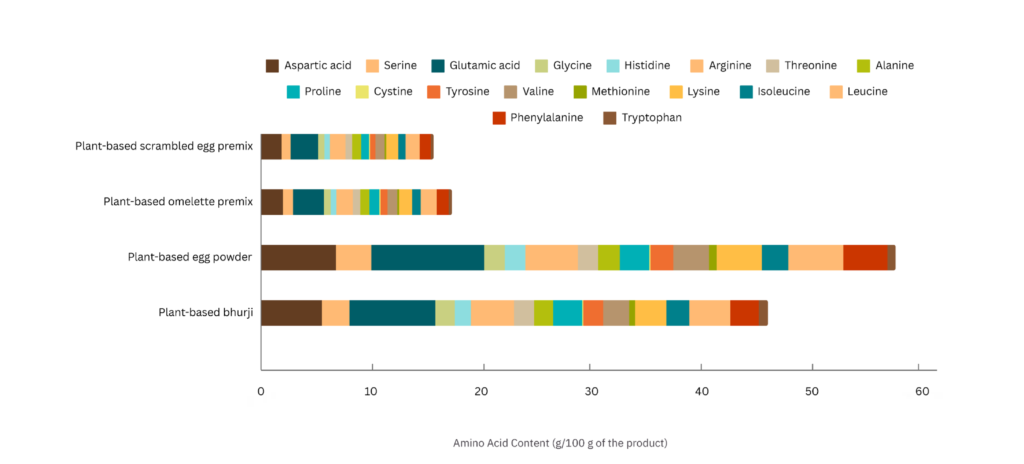
- The total amino acid content in the 22 different plant-based meat products ranges between 0.37 g and 19.91 g/100 g.
- Glutamic acid in all the plant-based meat and plant-based egg products tested is at the highest concentration, irrespective of their format. However, the amino acid at the lowest concentration varies with the product format.
- The total amino acid content in the different plant-based egg products ranges between 15.56 g and 57.45 g/100 g, which is substantially higher when compared to the range of plant-based meat products.
- Future studies should focus on scientific methods arriving at optimal and cost-effective combinations of plant proteins with enhanced amino acid scores for the development of plant-based alternative protein products.
Dietary fibre
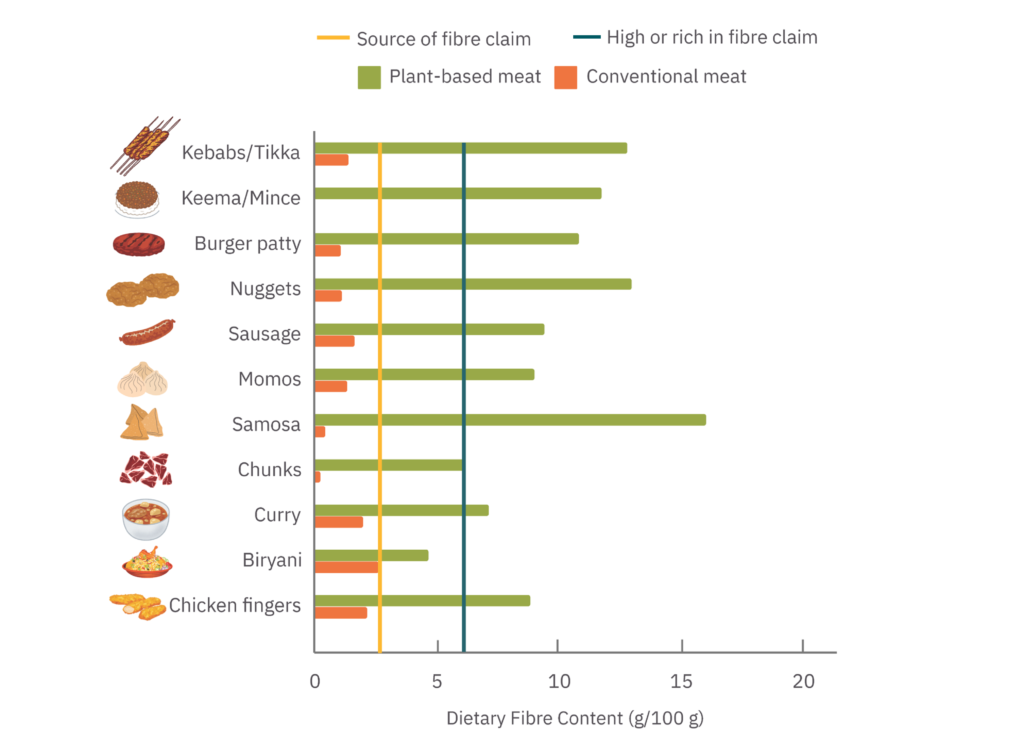
- While none of the animal-derived products meet FSSAI’s criteria to be considered a source of dietary fibre, all the plant-based meat products in the Indian market can be considered a source of fibre. Except the biryani format, all the other plant-based meat product formats fall within FSSAI’s ‘high fibre’ category.
- The fibre content of plant-based meat and egg products can be attributed to flour-based ingredients derived from wheat, oats, rice, soy, quinoa, barley, konjac, and corn. Other ingredients contributing to the dietary fibre content of plant-based meat are pea fibre, inulin, and psyllium fibre.
Fat
- All formats of plant-based meat products except samosas have a lower or comparable total fat content to animal-derived products.
- Efforts to reduce or eliminate saturated fat content in plant-based meat products can lead to significant nutritional and health advantages over animal-derived products.
- All the formats of plant-based egg products have a lower total fat content than their conventional counterparts, particularly the plant-based egg powder and scrambled egg pre-mix. This also holds true for saturated fat content.
Fatty acid composition
- Among the different formats, kebabs, nuggets, and burger patties have the highest average PUFA content. The highest average MUFA is observed in nuggets, chunks, and kebabs. Sausage, burger patties, and nuggets contain the highest average SFA content. The nuggets format appears to have a relatively more balanced fatty acid profile compared to other product formats.
- While many studies have found that plant-based meat products are healthier than animal meat, there is potential for these products to achieve a PUFA-rich fatty acid profile.
- The tested plant-based egg powder and scrambled egg products fulfil the criteria to claim being a ‘source’ of omega-3 fatty acids.
- Oleogels, which are fat sources consisting of oils in a solid-like gel network, can be used as a healthier substitute for solid fats such as hydrogenated vegetable fat (high in SFA and trans fats).
Sugar

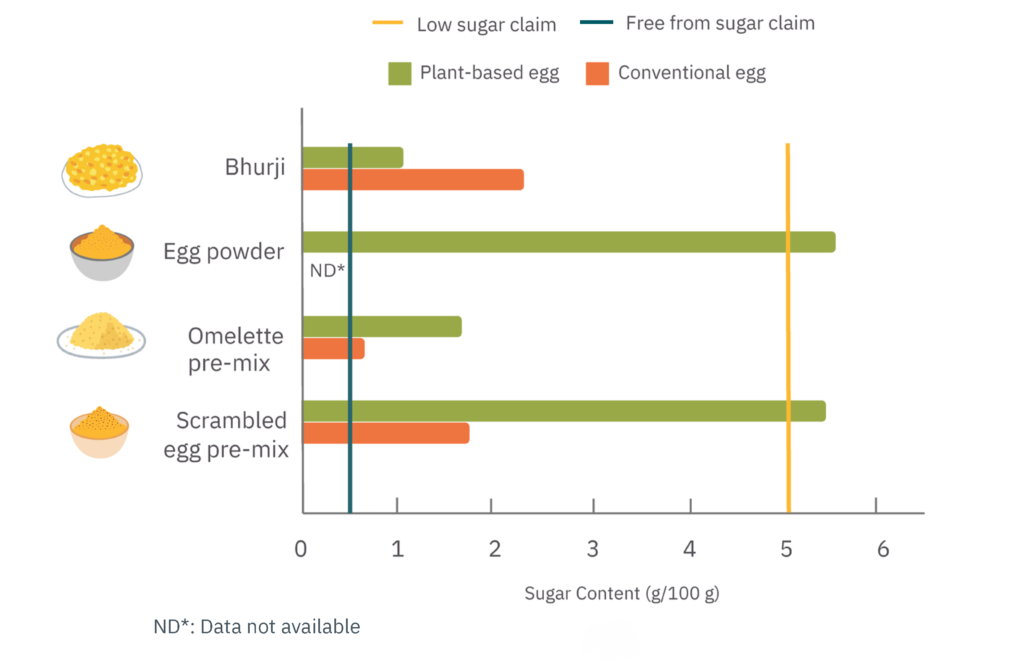
- The average sugar content of both plant-based and conventional meat products is well within the ‘low sugar’ threshold specified by FSSAI.
- Plant-based meat products contain a higher sugar content (~2-fold) than conventional meat. In plant-based egg products, however, the average sugar content is below FSSAI’s low sugar threshold in bhurji and omelette but more than 5 g/100 g in powder and scrambled egg formats.
Energy
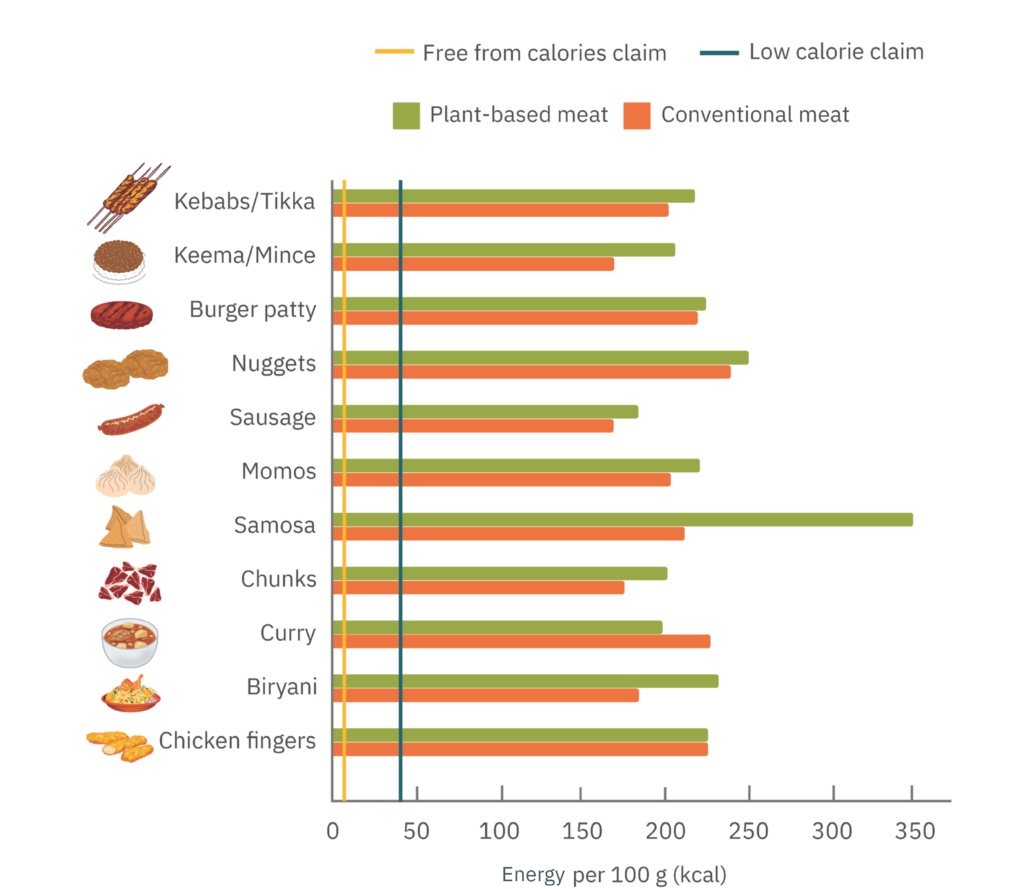
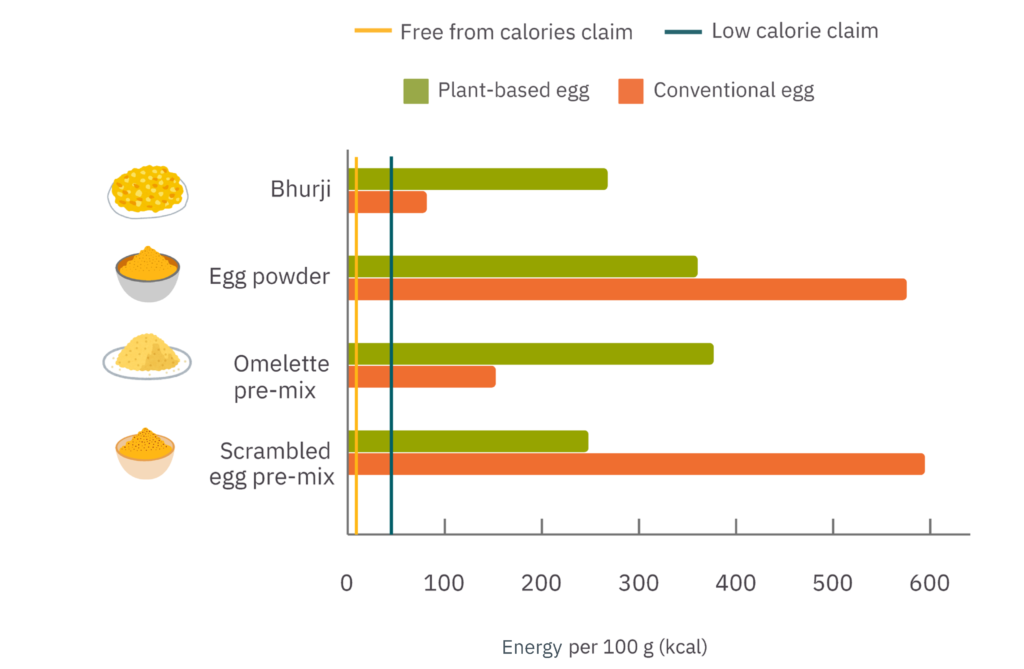
- The energy in calories provided by different formats of plant-based meat and egg products (per 100 g) range between 169-349 kcal and 249-378 kcal, respectively.
- While plant-based egg powder and scrambled egg pre-mix provide fewer calories (by 37.4% and 58.2%, respectively), plant-based bhurji and omelette pre-mix provide 2.5-3.3 times more calories than conventional egg products.
- The plant-based chunk and curry formats are better than their conventional counterparts, with 42.6% and 31.4% of energy derived from their protein content, against 22.3% and 29.6% in the case of animal-derived products.
Sodium
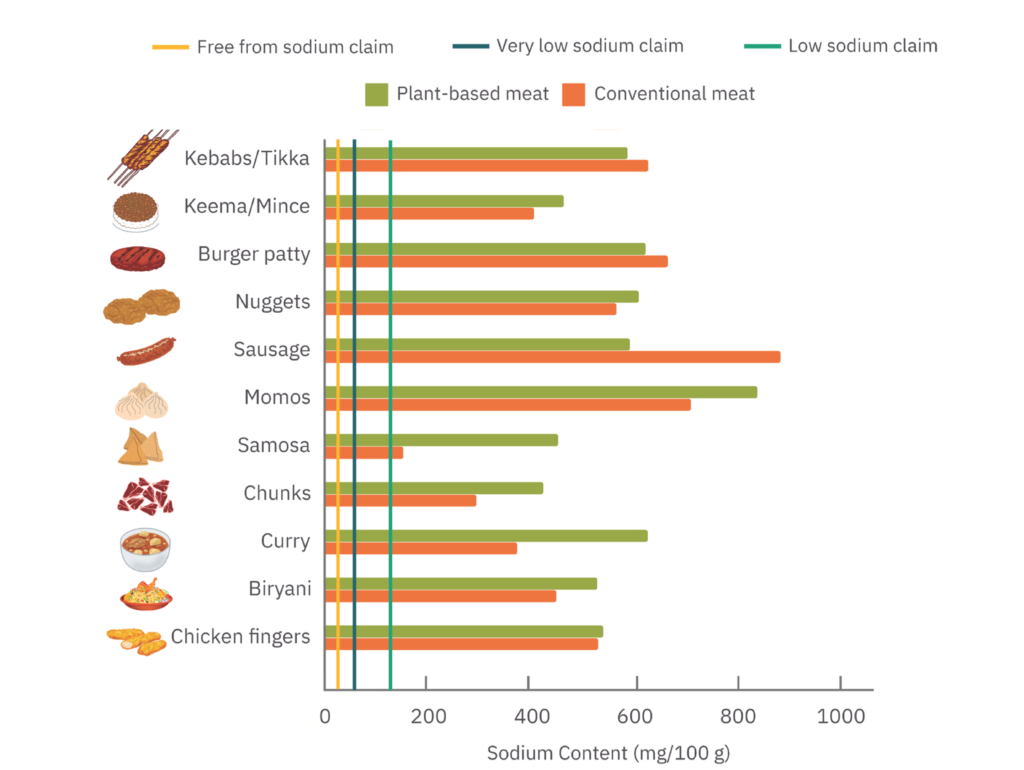
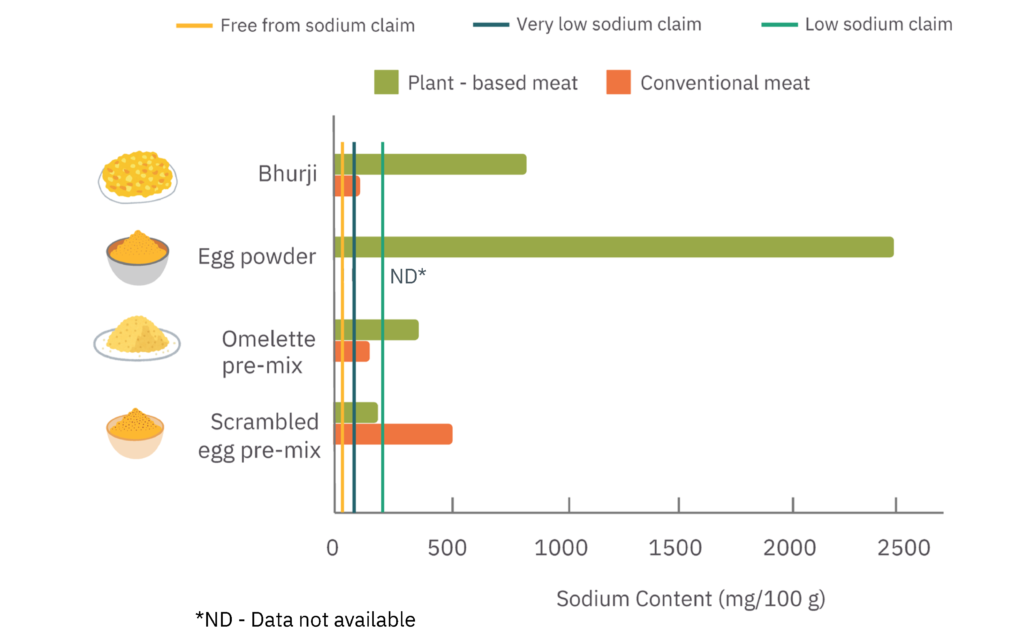
- The average sodium content is either similar to or higher in most plant-based meat products compared to conventional counterparts, with significant variation existing across formats and even within certain product formats (especially plant-based momos and curry).
- Both the plant-based and conventional meat and egg products tested do not comply with the FSSAI and FDA regulatory criteria to be considered ‘free from sodium’, ‘low in sodium’, or ‘very low in sodium’.
- There is a potential for future work leading to reduced sodium content in plant-based meat and egg products. Recent research has been focusing on reducing sodium levels in plant-based meat analogues by using taste modulators such as yeast extract or other flavourings that do not contain high sodium.
Micronutrients
- One product each from the plant-based meat chunks and curry formats shows considerable levels of iron, with one serving accounting for 60.9% (adult male)/39.9% (adult female) and 51.6%/33.8% of the RDA for iron, respectively.
- Vitamin A levels are also noteworthy in plant-based products, particularly kebabs. These products deliver between 34.08 and 289.73 μg/100 g, significantly higher than their conventional counterparts, which often contain undetectable levels of this essential nutrient.
- Plant-based sausages contribute 4.4% of the RDA for vitamin C per serving. Two plant-based sausage products contain reasonable levels of vitamin B12, contributing to 34.1% of the RDA per serving.
- Overall, the data shows that many of the plant-based meat and egg products lack certain micronutrients.
- Processing-based ingredient optimisation approaches such as sprouting, enzymatic treatment, and controlled fermentation under standardised conditions can enhance micronutrient levels in different plant-based ingredients used in these products.





